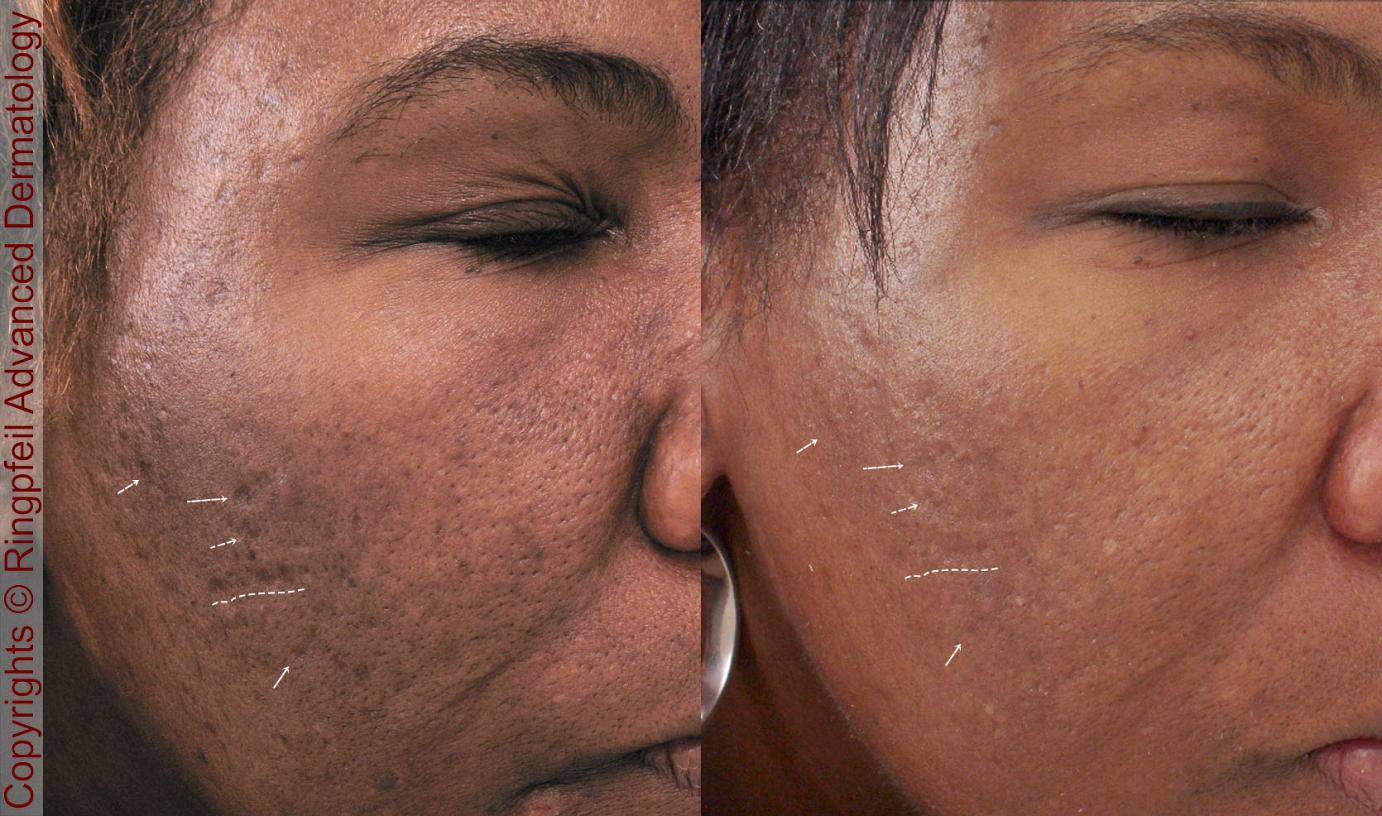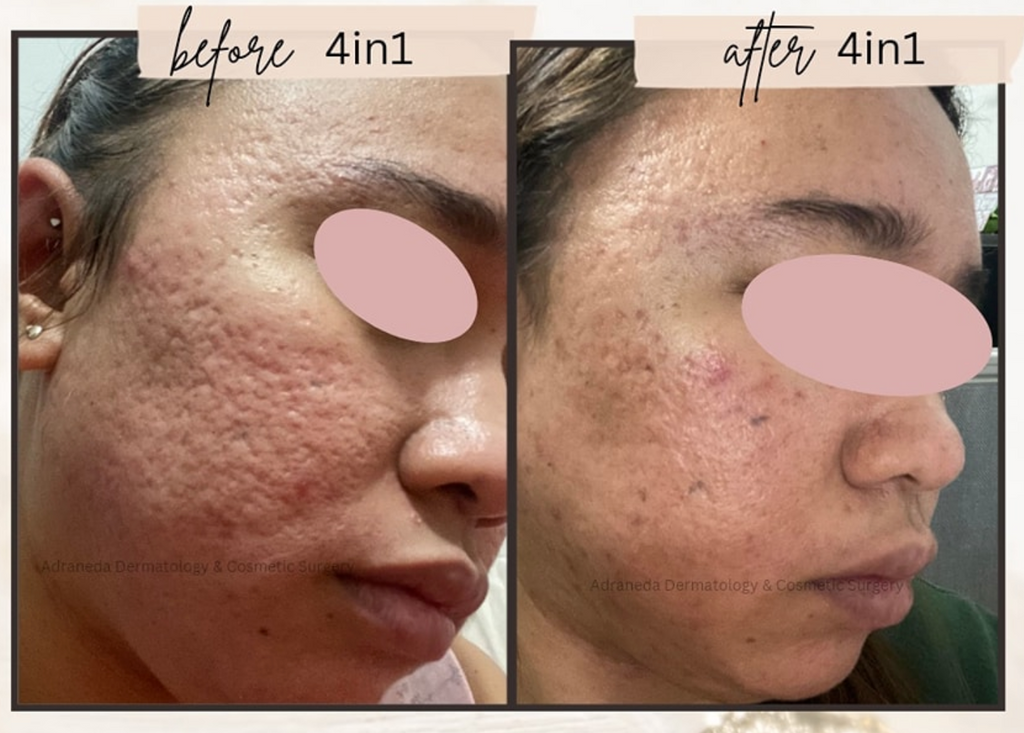Comprehensive Acne and Acne Scars Treatment: Achieve a Flawless Skin
Comprehensive Acne and Acne Scars Treatment: Achieve a Flawless Skin
Blog Article
Exploring Skin Disease: Identifying and Dealing With Acne Scars for Healthier Skin
Acne scars stand for a substantial concern for individuals looking for to preserve healthy skin, as they can affect both look and self-confidence. Comprehending the various types of marks, from atrophic to hypertrophic, is necessary for figuring out suitable therapy alternatives.
Understanding Acne Scars
Understanding acne marks is critical for anybody that has experienced serious acne, as these marks can have an enduring effect on both physical appearance and mental well-being. When the skin undergoes inflammatory actions throughout active acne sores, acne marks develop. The seriousness of scarring is frequently affected by variables such as the kind of acne, its period, and specific skin attributes.
The body's natural healing process can result in either atrophic scars, which appear as depressions in the skin, or hypertrophic scars, which are increased and result from overflow of collagen. Additionally, the psychological toll of acne scars must not be taken too lightly; several individuals report sensations of shame, stress and anxiety, and reduced self-confidence. This emotional worry can impact social communications and overall lifestyle.
Dealing with acne marks needs an extensive understanding of their formation and influence. Awareness of the capacity for long-term consequences connected with without treatment marks can encourage individuals to look for ideal therapies. Early intervention and efficient administration strategies can substantially enhance skin appearance and improve psychological strength, highlighting the value of comprehending the intricacies bordering acne scars.
Kinds of Acne Scars
Acne scars can be classified into distinct types, each showing one-of-a-kind features and calling for particular therapy approaches. The main kinds of acne scars consist of atrophic, hypertrophic, and keloid marks.

Hypertrophic scars, in contrast, are raised above the skin degree and are the result of too much collagen production during the recovery process. They normally stay within the borders of the original acne lesion. Keloid marks are similar yet extend past the initial injury website, forming larger, raised locations that can be unpleasant or scratchy.
Understanding these sorts of marks is crucial for picking proper treatment options. Different marks may react far better to certain treatments, such as laser treatments, fillers, or surgical interventions, stressing the relevance of a tailored technique to acne scar management.
Determining Your Scars
When evaluating the look of your skin, it is vital to accurately recognize the sort of marks present, as this will certainly inform the most reliable treatment approach. Acne scars usually fall under 2 groups: hypertrophic and atrophic marks. Atrophic marks, which are one of the most usual, look like anxieties or indentations on the skin. These can even more be classified right into ice-pick scars, boxcar marks, and rolling marks, each showing unique attributes and calling for various techniques for analysis.
Hypertrophic marks, on the various other hand, are increased and happen because of excessive collagen production during the recovery process. Acknowledging the particular functions of your marks-- such as width, depth, and texture-- is important for appropriate identification. In addition, consider the circulation of marks throughout your skin, as this can indicate the intensity and period of the acne condition.
Engaging with a skin specialist can supply beneficial insights into the nature of your scars, assisting in the differentiation in between different types. A thorough understanding of your scars will eventually lead to a much more customized and effective therapy strategy, ensuring a more clear and healthier skin tone.
Treatment Alternatives Readily Available
Determining the certain kind of acne scars present on your skin lays the groundwork for exploring efficient therapy options. Typical kinds of acne scars consist of atrophic (clinically depressed), hypertrophic (raised), and post-inflammatory erythema.
For atrophic marks, options such as chemical peels, microneedling, and laser resurfacing are extensively utilized. Chemical peels off use acids to eliminate the outer layer of skin, advertising new cell growth. Microneedling involves small needles that create micro-injuries, boosting collagen manufacturing. Laser resurfacing targets harmed skin cells, enhancing appearance and tone.
Hypertrophic marks can be treated with corticosteroid injections to squash the mark or laser therapy to lower redness and enhance appearance. acne and acne scars treatment. Silicone gel sheets and pressure dressings may also assist in handling he said raised marks
Furthermore, facial fillers can briefly complete anxieties from atrophic marks, while surgical excision might be ideal for severe situations. Each treatment choice has its considerations and benefits, making it necessary to speak with a skin doctor. They can offer tailored suggestions based upon the type and severity of your scars, in addition to your skin type and total wellness.
Tips for Avoidance
Effective avoidance approaches can significantly decrease the probability of developing acne marks. The initial step is to keep a constant skincare regimen that includes mild cleaning, exfoliation, and hydrating. Making use of non-comedogenic items aids stop stopped up pores, which can worsen acne. Additionally, including topical treatments you can try here having salicylic acid or benzoyl peroxide can successfully reduce and take care of outbreaks swelling.
Staying clear of the urge to pick or stand out acne sores is crucial, as this can bring about much deeper skin damage and increase the danger of scarring. Rather, consider making use of a cool compress or over the counter therapies to reduce swelling and redness.
Sun protection is an additional crucial element of avoidance; ultraviolet (UV) rays can darken marks and impede the healing process. Applying a broad-spectrum sun block with a minimum of SPF 30 daily can secure the skin and advertise even recovery.
Last but not least, maintaining a balanced diet plan rich in anti-oxidants, vitamins, and minerals sustains skin wellness and recovery. Remaining hydrated and taking care of stress and anxiety degrees can likewise play a significant function in minimizing acne flare-ups. By implementing these strategies, people can substantially lessen their chances of establishing acne marks.

Conclusion
In conclusion, understanding and determining acne scars is essential for efficient therapy and attaining healthier skin. Different kinds of acne scars, including hypertrophic and atrophic scars, require certain interventions customized to private demands.
The body's all-natural recovery process can result in either atrophic scars, which show up as depressions in the skin, or hypertrophic scars, which are increased and result from overflow of collagen. They are additional divided right into three subtypes: ice choice marks, boxcar marks, and rolling scars. Acne scars usually drop into two categories: hypertrophic and atrophic marks. These can additionally be identified right learn the facts here now into ice-pick marks, boxcar marks, and rolling marks, each exhibiting distinct features and needing various strategies for evaluation.
Different types of acne scars, consisting of atrophic and hypertrophic scars, necessitate particular interventions customized to specific demands.
Report this page